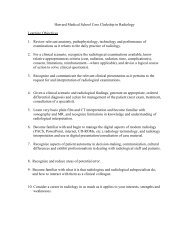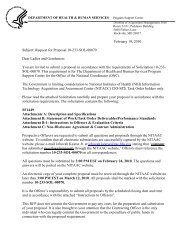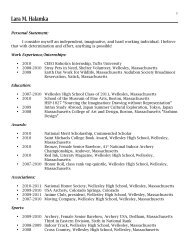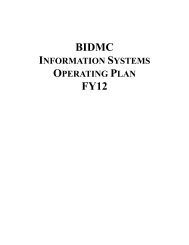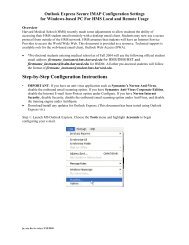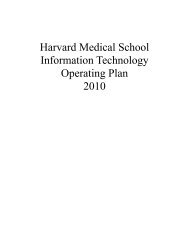SIMULATION CASEBOOK - MyCourses
SIMULATION CASEBOOK - MyCourses
SIMULATION CASEBOOK - MyCourses
You also want an ePaper? Increase the reach of your titles
YUMPU automatically turns print PDFs into web optimized ePapers that Google loves.
Gilbert Program in Medical Simulation<br />
Simulation Casebook<br />
Harvard Medical School Draft of the 1 st edition (2011), updated 3/2/12<br />
Pulmonary Embolism<br />
I. Target Audience: Medical Students, Residents<br />
II.<br />
Learning and Assessment Objectives<br />
Participants are expected to understand the scientific and humanistic issues underlying the disease<br />
assessment and treatment plan, and to critically consider and deploy the therapeutic options described<br />
Participants should provide a concise presentation of the patient to each physician consultant who<br />
participates in the exercise. Debriefing sessions by on-site clinical faculty is essential to discuss critical<br />
thinking and knowledge pathways, and to provide a forum for individual and team reflection on learning<br />
and practice goals. While the case descriptions are written with medical terminology, it is important that<br />
the provider and patient (i.e. the simulator) engage in authentic dialogue with lay terminology to reflect<br />
an actual patient encounter<br />
Critical Actions Checklist:<br />
DONE CRITICAL ACTION<br />
Telemetry monitoring<br />
Patient history<br />
Physical examination<br />
Supplemental O 2<br />
IV Access<br />
Obtain laboratory studies: cbc, chemistries, troponin, coagulation studies<br />
Obtain imaging: chest xray, Chest CT angiogram<br />
Administer anticoagulant<br />
III.<br />
Environment<br />
A. Simulation room set up: Part I in emergency department, Part II on medical floor or<br />
emergency department<br />
B. Manikin set up:<br />
1. High fidelity patient simulator<br />
2. No moulage needed<br />
3. Lines needed<br />
C. Props:<br />
1. Code blue cart<br />
2. Lab values (see Appendix A)<br />
3. Images (see Appendix B)<br />
D. Distracters: none<br />
IV.<br />
Actors<br />
A. Nurse: facilitate scenario<br />
B. Consultants (optional for higher level residents who can provide interpretation on their<br />
own)<br />
1. Radiologist: reads chest x-ray<br />
2. Cardiologist: reads ECG, recommends treatment plan<br />
42



